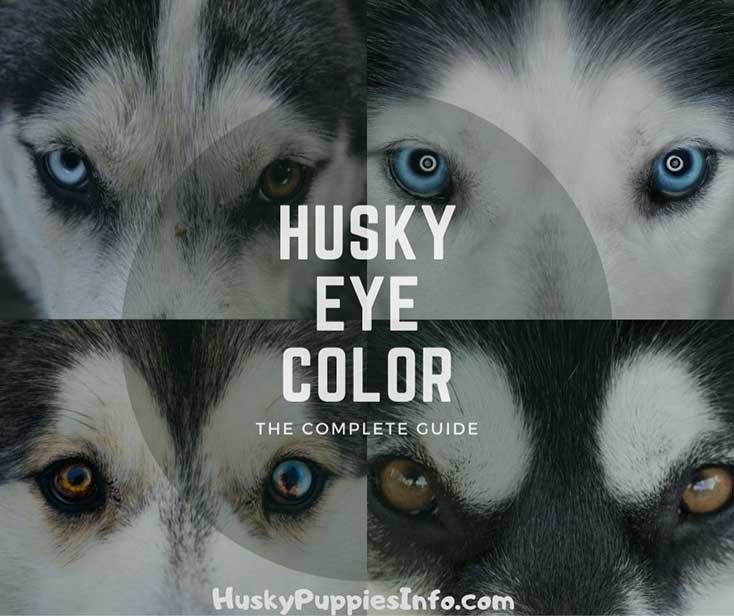
There are few dog breeds with eyes as magnificent as those on a Husky. Though the most common eye colors are an icy blue and deep brown, there is a bit of variance within these two brilliant hues. Let’s take a closer look.
Huskies can have a variety of eye colors, ranging from blue to brown, bi-eyed (one blue and one brown), and parti-colored (both blue and brown mixed within an eye). Though unusual, these striking peepers are just a normal genetic trait of the "wolfish breed" and are rarely a sign of illness.
To fully appreciate this natural phenomenon in Huskies, we’ll go through each eye color in more detail. After that, we’ll point out a few of the most common eye diseases in Huskies, along with our top three favorite supplements that can support strong eye health.
Blue Eyes
If you’ve seen a Husky at the dog park, it most likely had piercing blue eyes. This is no coincidence!
Approximately 40% of the Husky breed is known to have blue eyes, making it dominant. However, there is a range of blue shades that can be displayed–everything from pale white-blue to deep-sea blue, with silvery greys and seafoam greens in between!
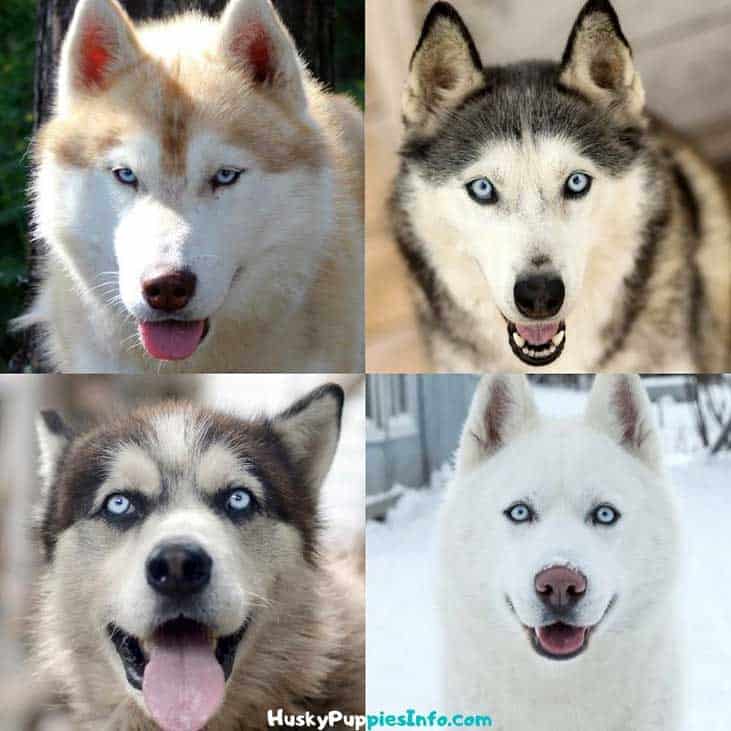
Why do husky have blue eyes?
Though blue eyes are rarely seen in other breeds of dogs and can be associated with eye problems or poor vision, this is not usually the case with Huskies.
In fact, the reason for their distinct blue eyes comes down to a gene mutation. Research conducted by Adam Boyko and Aaron Sams of Embark Veterinary Inc. showed a connection to a mutation of the ALX4 gene, which leads to a decreased pigment production in the eye. Hence, that powerful icy blue stare!
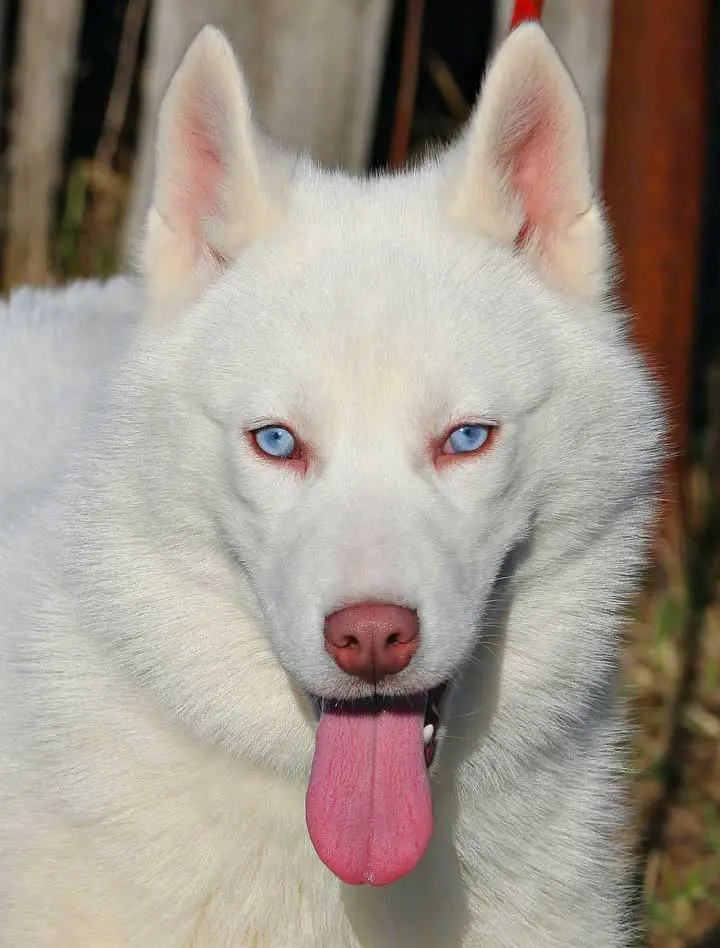
This husky puppy has the bright blue eyes that they have become known for, though the blues can vary from the light ice to the dark blue.
Are All Huskies Born With Blue Eyes?
Like everyone else, husky cubs begin to open their eyes on the 18–20th day from birth and the retina is fully formed on the 21–22nd day.
In almost all newborn husky puppies, the eyes are always blue or light blue. It is a dominant trait in the breed. Though this doesn’t necessarily mean they will have blue eyes as adults.
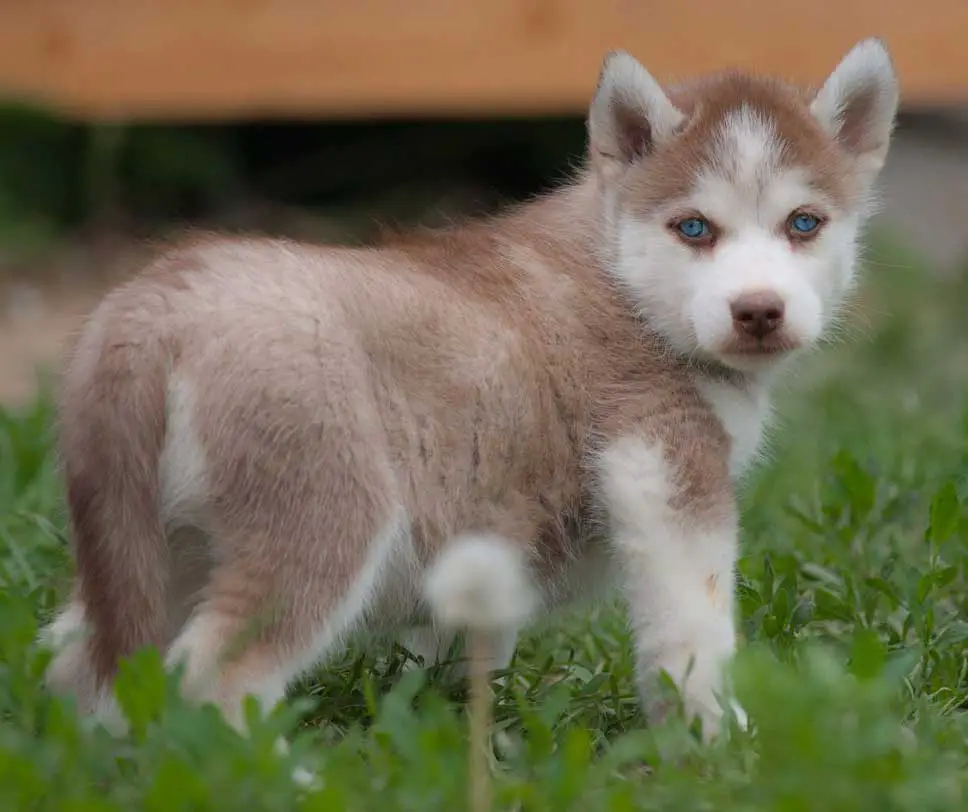
Brown Eyes
Speaking of brown eyes, this warm shade is another dominant color that some Huskies possess!
As with blue eyes, shades can vary from a light brown to a fiery amber to even a blackish-brown.
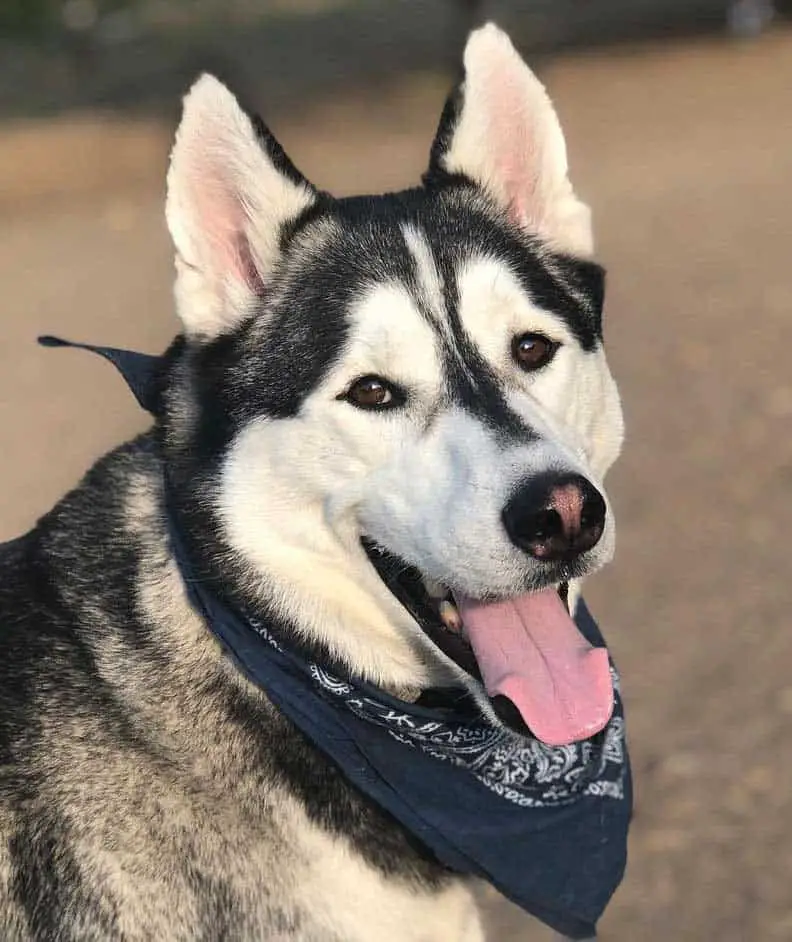
via Instagram:@compass_the_husky
The contrast of this eye color on a Husky that has a pale-colored face is often stunning and adds a warm touch to the stoic breed.
Related Article: Are Huskies Related To Wolves?
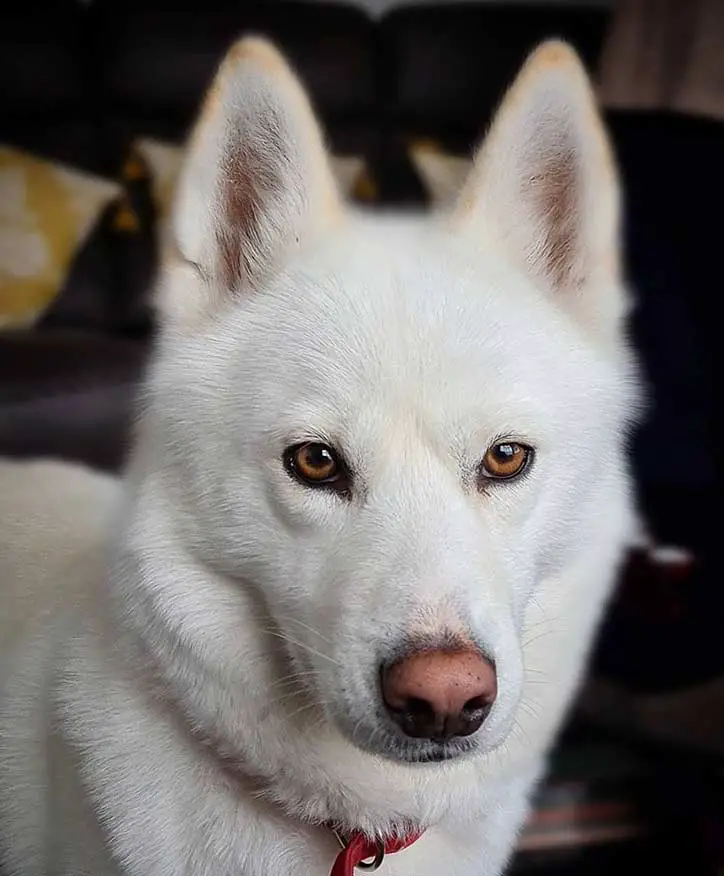
vie Instagram:@x_bella_the_husky_x
Although some people regard brown-eyed Huskies as non-purebred due to their darker eye color, this couldn’t be further from the fact. The American Kennel Club recognizes this variation as a breed standard.
Parti or Split Eyed
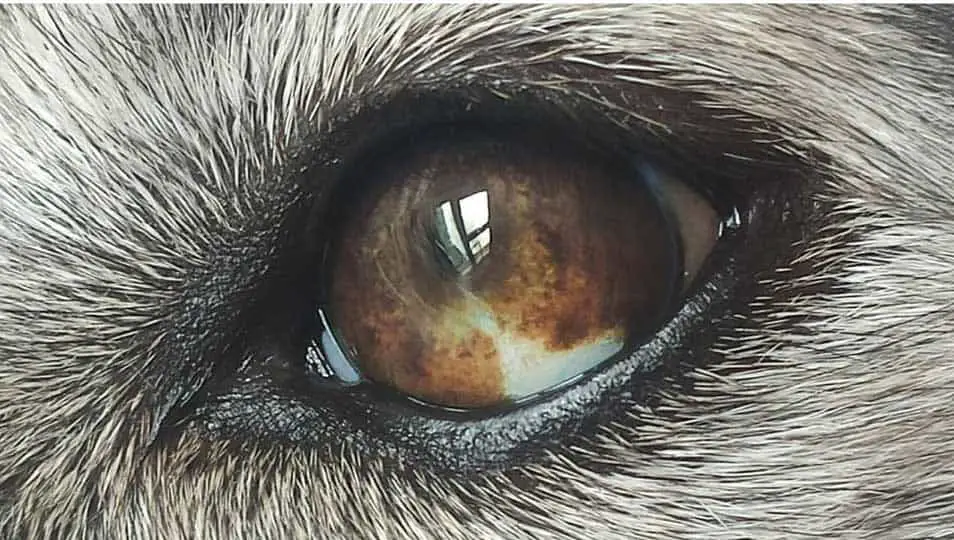
Rarer still is a Husky with a mix of brown and blue within one eye or within both eyes.
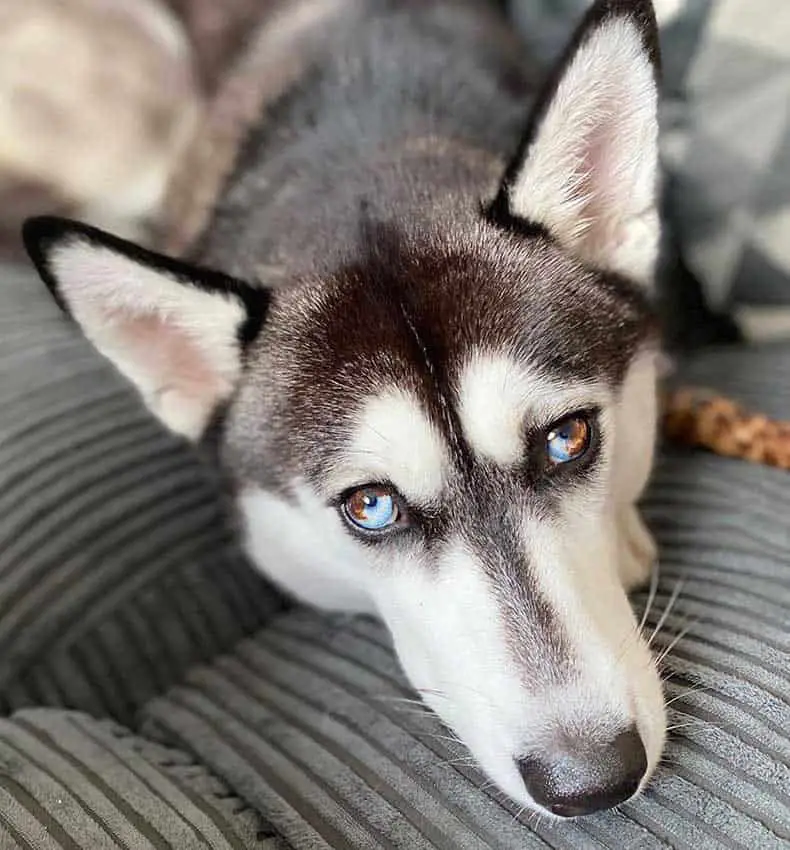
via Instagram:@layla_siberian
Approximately 5% of the breed are sporting these striking peepers, which is probably why it is so shocking to see them in your local dog park.
This is normal and is just one of the fascinating and interesting facts about Siberian Huskies.
Bi-Eyed
To put it simply, this is when a Husky has one blue eye and one brown eye. Pretty cool, huh?
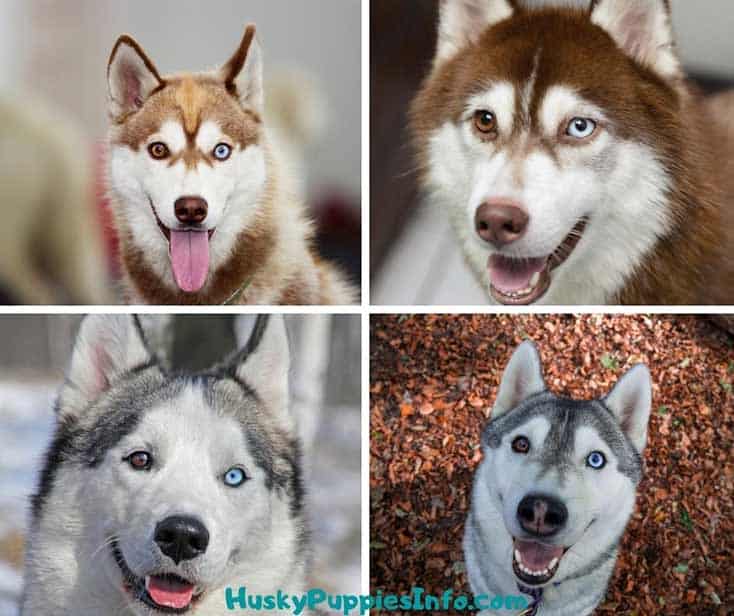

via Instagram:@snow_thebieyed_husky
Despite it being a bit peculiar-looking, there is no evidence to suggest that a bi-eyed Husky is at more risk of having problems with their eyesight than if they did not have it.
Why do huskies have different eye colors?
As you can see, some Huskies eyes can have one of each color (one blue, one brown). A similar mutation is found in some other breeds of dogs, in other animals and people as well. This fact surprises many and raises the completely natural question : “Why does a husky have different eyes?”

Such an amazing phenomenon is called heterochromia, more commonly referred to as bi-colored or bi-eyed. Heterochromia is the result of an excess or deficiency of melanin - the pigment responsible for the color of the iris of the eyes and does not affect the health of the animal.
The mixed eye coloring has nothing to do with cross breeding. Purebred Siberians can have different eye colors. Around 2 out of 5 Huskies end up with blue eyes, another 2 out of 5 with a shade of brown. Of the remaining 20% you will find around 15% bi-colored and 5% parti-colored.
Can husky eyes change color?
Siberian Husky puppies can change eye color just like their coat color. Eye color change can occur between 2 to 5 weeks after birth, even sometimes as late as 8 weeks! Usually, permanent color is reached by the age of 12-16 weeks.
That's right! The puppy with bright blue eyes that you bring home from the breeder might end up with different colored eyes. When selecting your puppy from a breeder, or placing a deposit, they will probably mention this to you and that there is no guarantee the eyes will remain the same color when the puppy fully grown.
If a Husky puppy’s eyes start to turn a cloudy dark blue by the 5-week mark, there is a good chance that they will end up being in the brown family by adulthood.
You can see an example on the picture below, the same husky had a change of eye color, from blue to brown through time.
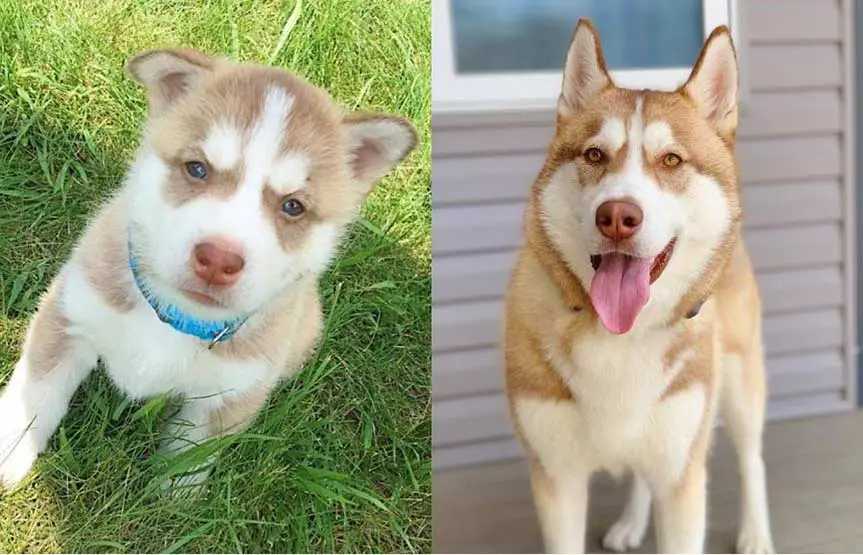
via Instagram:@husky.named.blu
The American Kennel Club says it is perfectly acceptable for the eyes of a Husky to be blue, brown, or mixed. Blue can range from a steel-gray color to bright blue, and brown can range from an orangy-copper to a deep chocolate brown.
Known Eye Problems in Huskies
Now that we’ve revealed all the wonderful eye colors a Husky can have, it’s important to be aware of some of the common eye problems that can affect this breed. The eyes are a great source of information about Husky’s overall health, so staying attuned to any changes to them is vital.
Hereditary or Juvenile Cataracts
This eye disease can appear in Husky puppies as early as three months. This disease can cause the loss of sight or even blindness due to a cataract developing in the lens of the eye, which decreases the amount of light passing through it.
It has been discovered that there is a recessive gene in the breed that is responsible for the disease.
Progressive Retinal Atrophy (PRA)
PRA is a disease that can affect a dog’s retina. This disease causes damage to the rods in the retina of the eyes. It is common for a Husky who has PRA to not be able to see well at night, and then as time goes on, develop daytime sight blindness.
This disease in male Huskies can be detrimental with loss of vision as early as five months of age.
Corneal Dystrophy
Huskies that suffer from Corneal Dystrophy will have crystalline opacity or laziness look to the cornea of the eyes. Usually, this disease does not affect a dog’s vision or cause any loss of sight. However, it will leave a Husky with vision impairment such as blurry vision, halos around light, and difficulty seeing at night.
This eye disease seems to affect females more than males, and there is currently no known cure.
It is important to check your Husky’s eyes regularly to ensure that your dog is not showing any signs of these common eye problems. If you do notice any abnormalities, it is necessary to make an appointment with your vet as soon as possible.
Related: Is it Worth to Buy Pet Insurance?
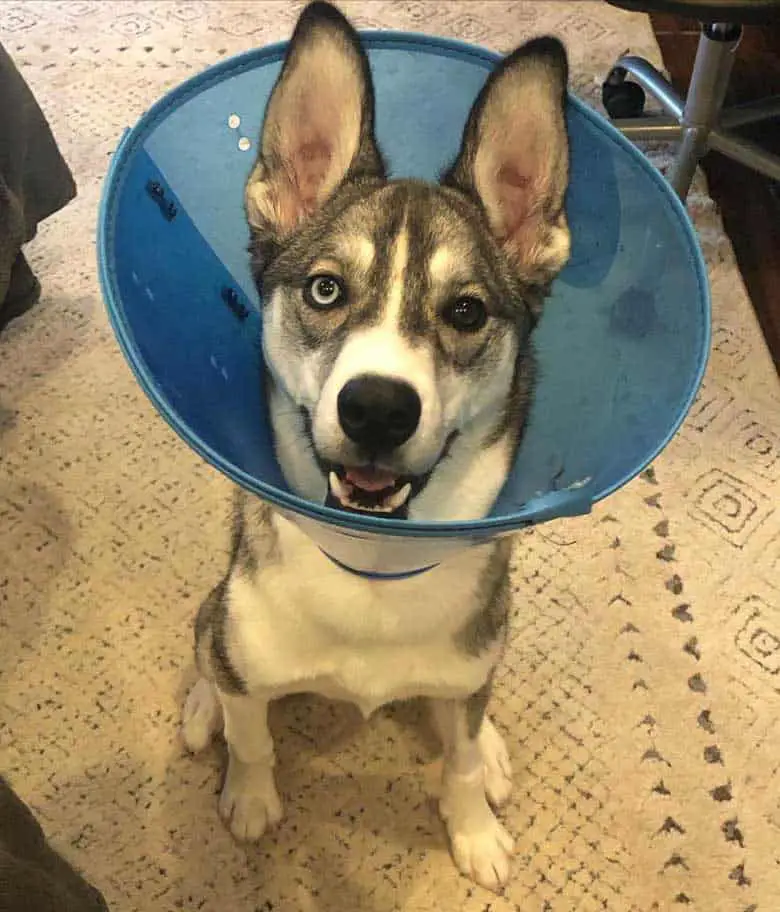
via [email protected]_
Eye Supplements for Huskies
It can be highly beneficial to give your Husky specially formulated vitamins and supplements to help maintain their health. Our top recommendation that target eye health for Huskies would be Ocu-Glo Dog Vision Supplement, which was developed by board-certified veterinary ophthalmologists and is veterinarian-recommended. It contains 12 antioxidants that have been proven to promote optimal eye health for dogs. The primary ingredients are Lutein, Grapeseed Extracts, and Omega-3 Fatty Acids.
Make sure you’re also taking care of your Husky’s overall health by monitoring their diet, and keeping them away from bad foods. Regular and proper exercise will also help keep your pup going for many, many years; if you’re looking for some new ways to spice up play time, check out this article to get some fresh and fun ideas!
Husky Eye Color SlideShow
Below is a video that shows off several huskies with different-colored eyes, so that you can get a better idea of all the possibilities. There are some very beautiful dogs showcased in it.
Conclusion
When it comes to the Husky breed, eye color can vary greatly from one to the other. Some Huskies may possess the more dominant icy blue or amber-brown eyes, while in rarer cases, some may have bi-eyed or even parti-colored eyes.
Which of the eye colors does your Husky have? Do you have a favorite of the color combos? Let us know your thoughts below!